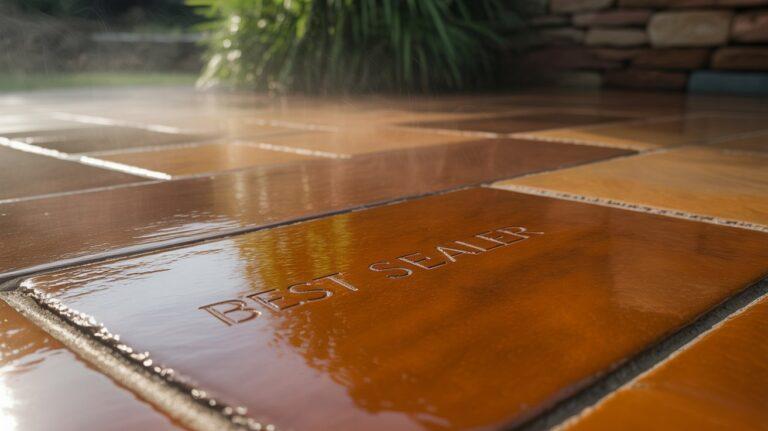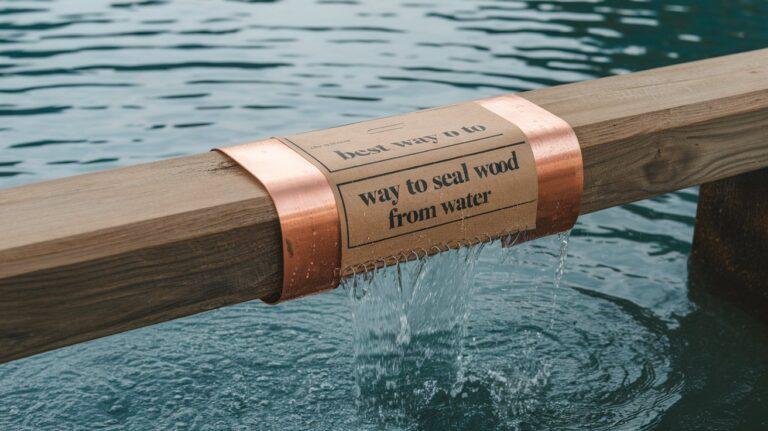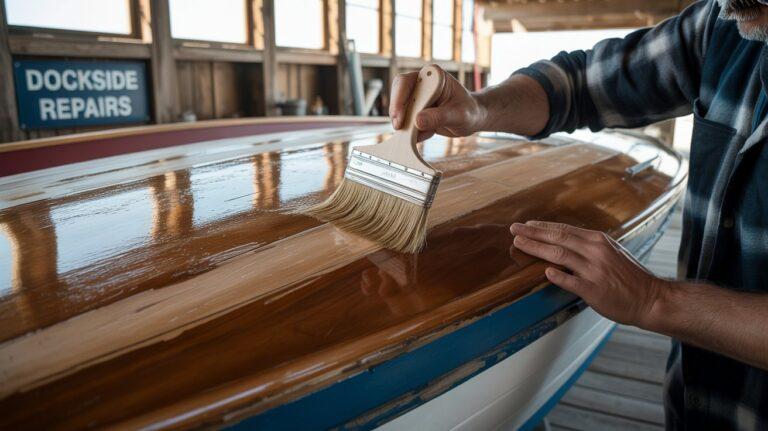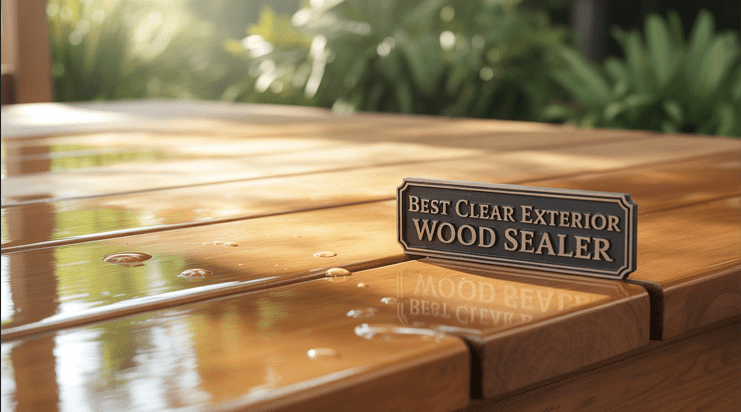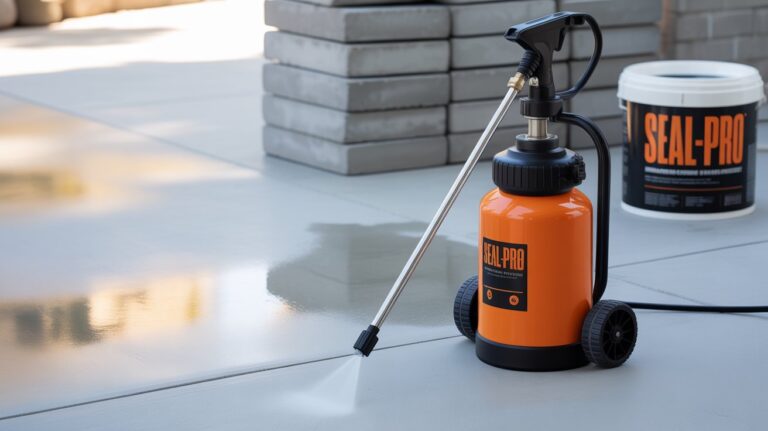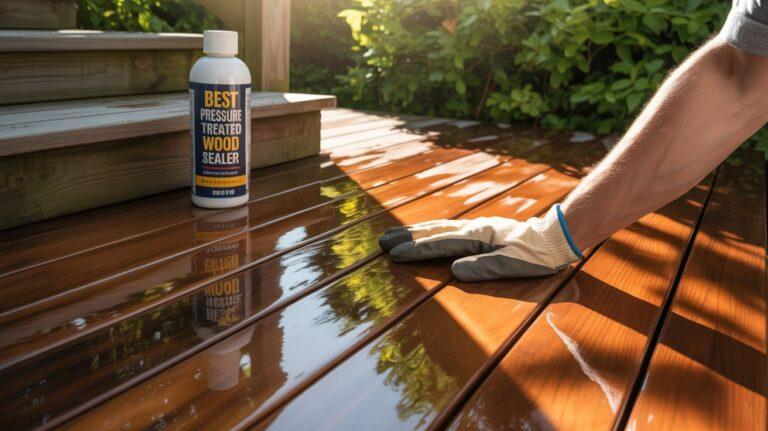Can You Use Concrete Sealer on Wood? The Unexpected DIY Hack
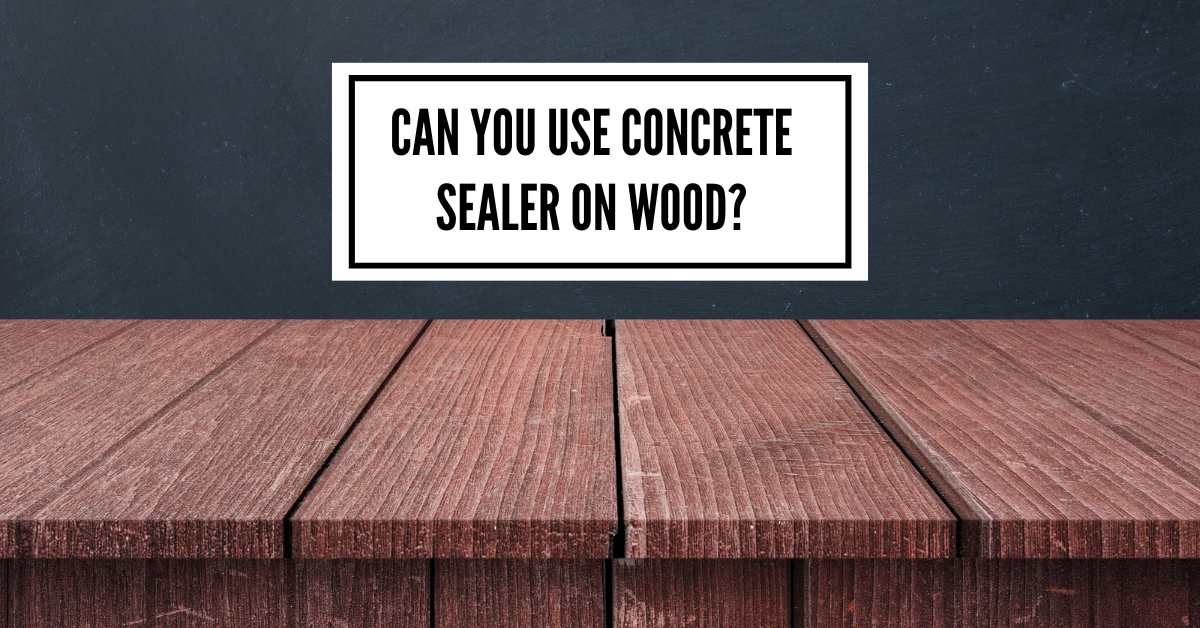
Every product is designed and tailored for an intended purpose, as are concrete and wood sealers. Concrete sealers are mainly used on concrete surfaces and similar hard surfaces to repel water and prevent water penetration and soluble contaminants.
Can you use concrete sealer on wood? You can only use water-based concrete sealers on wood surfaces. But not all woods have the same compound and nature. An inappropriate option may damage the wood surface. Test the sealant before applying it to the main wood.
Concrete Sealer on Wood: Is It a Good Idea?
Will concrete sealer work on wood? Concrete surfaces have increased thermal stability. They don’t shrink or expand as much as woods do. They are two completely different materials.
Concrete sealers come in various types, such as penetrating, colored, acrylic, polyurethane, etc.
Using an appropriate concrete sealant on wood may cause damage to the wood, such as swell and warp issues. At worst, you may see peeling, bubbling, and chipping problems.
Avoid using any Latex and silicone-based concrete sealer for wood floors as they can heavily damage your wood.
What Type of Concrete Sealer to Use on Wood?
Water-based concrete sealers are the best choice for wood. They can safely penetrate through the small pores of the wood and protect the wood fibers.
This type of sealant is known as a high-solids concrete sealer. They are mainly made of a mixture of top-grade acrylic resin polymers and aromatic solvents.
When you apply this water-based concrete sealer on wood, mild chemicals, and oils will cause minimal harm on a sealed wood floor.
How to Use Concrete Sealer on Wood?
The followings are important steps you want to follow to get the job done!
Step: 01—Choosing the Right Concrete Sealer
The first substantial job is selecting an appropriate concrete sealer for wood. If you want to use your old concrete sealant lying at your home, make sure to figure out its compatibility.
Many users have used EasySeal igh-Solids Acrylic Concrete Sealers on wood. It has given them a positive result.
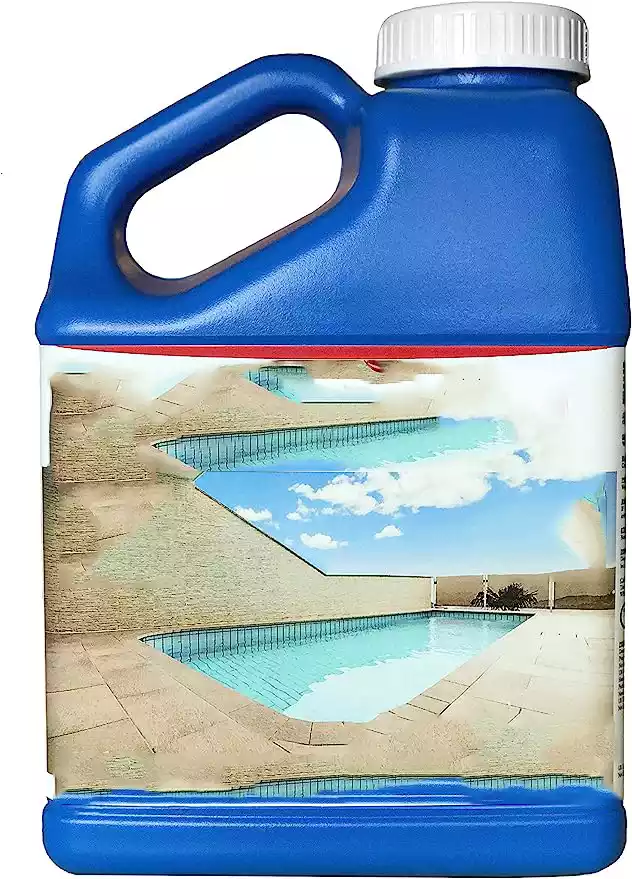
This concrete sealant can protect your wood floors from chemicals, oils, moisture damage, and UV rays.
The product has minimal odor and VOCs. This eco-friendly sealant is safe to use without wearing any masks or respirators. It takes only one hour to dry thoroughly.
However, you can choose other options if it works for your particular wood surface.
Also, this option may not work on your wood material as the nature and compound of woods vary from each other. You can also check out Watco Concrete Sealer.
Step: 02—Preparing the Wood Surface
When it comes to using a concrete sealer on wood deck or other surfaces, it is essential to prepare the wood object perfectly.
You can clean the surface using a mild detergent and water solution. Scrub gently to remove dirt and debris. Then, rinse thoroughly and let it dry properly.
If you want to remove the older finish or any imperfections, sand the wood carefully. Use 100 to 120 grit sandpaper to smooth out these medium flaws.
But 200-220 grit sandpaper appears to be the best choice when it comes to getting only tiny imperfections.
Step: 03—Applying the Concrete Sealer
Once you prepared the wood surface perfectly, you can use a concrete sealer on the exterior wood.
Make sure to use a brush or roller to avoid over-applying the wood surface. It gives you more control regarding how much to apply.
Sprayers are a less preferred option because too much liquid may come out through the nozzle. You may have to experience a bad result.
Before applying the main wood surface, test the concrete sealer on an unnecessary but similar wood to check its effectiveness.
Start applying the sealant from one end and work your way across. Maintain a consistent application pattern in all areas without any excessive buildup.
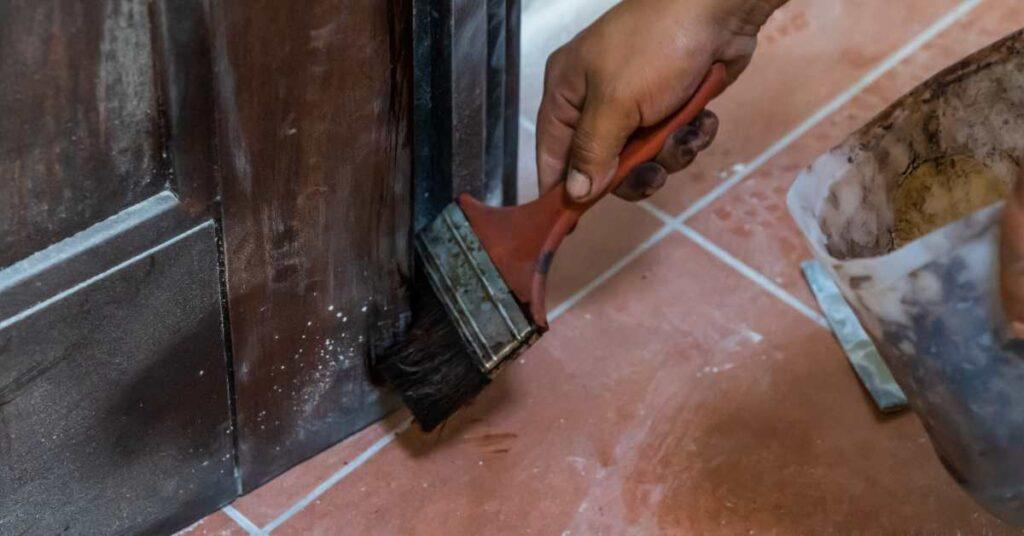
Step: 04—Giving Enough Curing Time
The drying or curing time of a concrete sealer varies. Some may be appropriate for light foot traffic within 12 hours.
But some concrete sealers may take at least 24 hours to become fully dry. Following the manufacturer’s guidelines is best to figure out the ideal curing time.
Also, you can’t overlook the impact of temperature and humidity. It will at least moderately affect the drying period.
Step: 05—Inspect the Result
Once the wood surface has dried properly, carefully inspect its result. It should fill up all the tiny pores of the wood surface.
If you think one coat cannot protect the wood subject, you can go for another one.
However, it is best to follow the manufacturer’s recommendation. Some concrete sealers might be too thick to apply a second coat.
Besides, a thicker coating may make the wood surface uneven in some areas. This may lead to bubbles.
When applying the second coat, use as little as possible but evenly. Dry the sealant properly before applying the primary paint.
Waiting at least 2-3 days to see the transformation is best. You will be able to make better decisions to choose the best color paint that goes well with the sealant.
Can I Use Paver Sealer on Wood to Remove Sealer?
Using paver sealer on wood is not recommended, as it is specifically designed for paving surfaces. Instead, opt for a wood sealer to protect and enhance the wood’s appearance. To remove paver sealer effectively, it’s best to stick with appropriate wood sealants and follow recommended removal techniques for the desired outcome.
Bonus Tips When Using Concrete Sealer on A Wood Surface
01. If you notice an odd appearance on the wood surface after applying a concrete sealer, act quickly and remove the sealant before it causes further damage.
02. Use a solvent to remove dried sealant from the wood surface. But make sure it doesn’t cause any color fading or further damage.
03. If you can’t remove all inappropriate concrete sealants from the wood surface, sand the surface properly.
04. If you want to apply the concrete sealer on an exterior wood surface, avoid choosing a rainy or highly sunny day. It will affect your result.
05. Keep the foot traffic minimal until the sealant cures fully. Kids and pets should not come close to the working area until you complete the project.
FAQ’s
Can Concrete Sealer Be Used to Waterproof Wood?
Yes, concrete sealer can be used to waterproof wood, but it is not the most ideal or common choice for waterproofing wood surfaces.
What Should I Use to Seal Wood Instead?
Wood sealers, stains, varnish, lacquer, or polyurethane are suitable options for sealing wood surfaces.
Can Concrete Sealer Harm Wood?
It’s possible that a concrete sealer could damage wood or lead to an unsatisfactory finish.
Are All Concrete Sealers the Same?
No, there are several types of concrete sealers, each with its own properties and uses.
What Are the Benefits of Sealing Wood?
Sealing wood can protect it from moisture, UV rays, and other damaging factors, helping to extend its life and maintain its appearance.
What Does Concrete Sealer Do to Wood?
Concrete sealer is specifically designed to protect and enhance porous materials like concrete, brick, and stone, but when applied to wood, its effects can vary:
✅ Water Resistance – Some penetrating concrete sealers may provide a water-repellent barrier on wood, reducing moisture absorption.
❌ Limited Adhesion – Since wood is a more flexible and porous material than concrete, concrete sealers may not bond properly, leading to peeling or flaking over time.
❌ Potential Discoloration – Some sealers can cause yellowing or uneven absorption on wooden surfaces.
Can You Use Concrete Coating on Wood?
Concrete coatings, such as epoxy or polyurethane-based coatings, are typically not formulated for wood. However, here’s what you should know:
✅ Polyurethane-Based Coatings – Some polyurethane concrete coatings can adhere to wood, offering protection against wear and tear.
❌ Cracking & Peeling Risk – Many concrete coatings lack flexibility, making them prone to cracking when wood expands and contracts.
❌ Not Ideal for Aesthetic Finishing – Concrete coatings may not provide the desired smooth or natural look for wooden surfaces.
If you’re looking for durability and moisture resistance, a wood-specific polyurethane or acrylic sealer is a much better choice.
Can You Use Wet Look Concrete Sealer on Wood?
“Wet look” concrete sealers contain gloss-enhancing agents that give concrete a shiny, wet appearance. But when applied to wood, the results are unpredictable:
✅ Glossy Finish (Temporarily) – Wet look sealers may give wood a temporary glossy effect, but the finish can be inconsistent.
❌ Peeling & Flaking – Most wet-look concrete sealers are designed to bond with rough, porous surfaces, making them unsuitable for wood.
❌ Traps Moisture – Instead of allowing wood to breathe, a wet-look concrete sealer may trap moisture, leading to warping or mold growth.
For a similar glossy finish, consider polyurethane or high-gloss wood sealers that are specifically designed for wooden surfaces.
Can You Use Concrete Sealer on Wood Floors?
Concrete sealers are not recommended for wood floors, as they are formulated for hard, non-flexible surfaces. Here’s why:
✅ Some Penetrating Sealers May Work – Certain water-based penetrating sealers might provide some moisture resistance but won’t offer long-term protection.
❌ Poor Durability – Concrete sealers don’t flex with wood, causing them to crack, peel, or wear off quickly.
❌ Difficult to Remove – Once applied, a concrete sealer may leave an uneven finish and be difficult to sand or refinish properly.
For wood floors, it’s best to use a polyurethane, epoxy, or acrylic wood floor sealer designed for high-traffic areas.
Verdict Words
If you want to use your old concrete sealers on a wood surface, it is best to test their compatibility. But it is best to use wood sealers on wood surfaces to avoid heavy damage.
Hopefully, you got a clear answer to the question, “Can you use concrete sealer on wood?” Let me know if you have any further queries!

I am Robert Sandin, a professional sealing expert with a diverse range of expertise. From concrete to various other materials, I possess in-depth knowledge and experience in the art of sealing. On my website, I offer valuable tips and expert recommendations on sealing techniques and products for different materials. Whether it’s concrete, wood, metal, or more, I am committed to providing you with the guidance you need for successful sealing projects.

